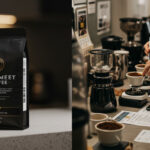
Is Traditional Coffee Always Drip-Brewed? Exploring Classic Brews

Table of Contents
ToggleThe Essence of Traditional Coffee
Defining “Traditional” in the Coffee World
When we speak of traditional coffee, we evoke a sense of timelessness—methods and rituals that have stood the test of time. Traditional coffee often refers to brewing techniques like drip coffee, percolation, or even the simplicity of a stovetop Moka pot. These methods, though uncomplicated, yield a brew that has comforted generations. It’s the kind of coffee that doesn’t require elaborate equipment or trendy additives; it’s a humble, straightforward experience rooted in authenticity.
The Cultural Significance of Classic Coffee
Coffee is more than just a beverage; it’s a cultural cornerstone. In the United States, diner coffee—poured steaming hot into thick ceramic mugs—has become a symbol of community and shared moments. Elsewhere, traditions like Turkish coffee rituals or Italian espresso breaks highlight how coffee intertwines with daily life and heritage. These practices remind us that coffee is not just about the caffeine but about connection, tradition, and the simple pleasures of life.
- Drip coffee—the quintessential American morning ritual.
- Italian espresso—a pause in the day, a moment of reflection.
- Turkish coffee—a symbol of hospitality and tradition.
“Coffee is a language in itself.” – Jackie Chan
Drip Brewing: A Staple of American Coffee Culture
The Dawn of a Morning Ritual
In the early 20th century, drip brewing emerged as a cornerstone of American coffee culture, transforming the way we start our days. Its rise coincided with the advent of the electric drip coffee maker in the 1970s, a gadget that made it easier than ever to brew a pot of coffee at home. This innovation didn’t just simplify the process—it turned coffee brewing into a ritual, a comforting routine that signaled the start of a new day. For many, the sound of coffee dripping into a carafe became synonymous with waking up, a timeless melody that continues to echo in kitchens across the nation.
Simplicity That Speaks Volumes
What makes drip-brewed coffee so enduring is its simplicity. Unlike elaborate brewing methods that require precision and patience, drip coffee is straightforward and forgiving. All you need is ground coffee, hot water, and a drip coffee maker. This accessibility made it a staple for busy households, diners, and office break rooms alike. Its uncomplicated nature also allows the flavor of the beans to shine, creating a familiar and comforting taste that feels like a warm embrace.
A Nostalgic Brew
For generations, drip-brewed coffee has been more than just a beverage—it’s a cultural touchstone. It’s the coffee your grandparents shared at the kitchen table, the cup you sipped during late-night study sessions, and the brew that fueled road trips to the next town. Its aroma evokes memories of Sunday mornings, family gatherings, and diner booths where time seemed to stand still. Drip coffee carries with it a sense of nostalgia, a reminder of the simple pleasures that ground us in an ever-changing world.
The Everyday Comfort
Drip coffee’s ability to blend seamlessly into daily life is part of its magic. It doesn’t demand attention or ceremony; it’s just there, ready to accompany you through your morning newspaper, work calls, or quiet moments of reflection. Its consistency and dependability make it a trusted companion, a small but significant source of comfort in the rhythm of everyday life. Whether it’s served in a diner’s ceramic mug or your favorite travel tumbler, drip-brewed coffee remains a beloved fixture in the American experience.
Beyond Drip: Other Traditional Brewing Methods
French Press: A Rich and Robust Alternative
For those who crave a full-bodied, unfiltered coffee experience, the French press has long been a beloved classic. Unlike drip coffee, this method allows the grounds to steep directly in hot water, extracting deep, rich flavors that linger on the palate. The result is a brew with a bolder texture—almost velvety—and a clarity of taste that highlights the coffee’s natural oils and nuances. The ritual of pressing the plunger down feels satisfyingly deliberate, a quiet moment before the first sip. Whether enjoyed in a Parisian café or your own kitchen, the French press is a timeless nod to slow, intentional brewing.
Pour-Over: A Handcrafted Coffee Experience
There’s an art to pour-over coffee, a method that rewards patience and precision. Originating from early 20th-century kitchens and Japanese kissatens, this technique involves pouring hot water over fresh grounds in a slow, circular motion, allowing each bloom to unfold. The result? A clean, bright cup with a delicate complexity—no two batches are quite the same. For many, the ritual is as comforting as the drink itself: the sound of water trickling through the filter, the earthy aroma filling the air. It’s coffee at its most elemental, connecting the drinker to the craft behind every drop.
Cowboy Coffee: A Rustic, Old-School Approach
Before modern gadgets simplified brewing, there was cowboy coffee—a no-frills tradition born on campfires and frontier trails. Grounds boiled in a pot with water, then settled with a splash of cold water or even an eggshell (a trick some swear by), create a brew as rugged as the landscapes that inspired it. Though it lacks refinement, there’s charm in its simplicity—a reminder of coffee’s role as fuel for early risers and adventurers. Strong, slightly gritty, and unapologetically potent, cowboy coffee carries the spirit of generations who measured time by sunrises and work left undone.
Global Traditions: Coffee Brewing Around the World
Turkish Coffee: A Centuries-Old Tradition
Step into the heart of Istanbul, and you’ll find Turkish coffee, a brew that has remained virtually unchanged for centuries. Made using finely ground coffee beans, water, and a special pot called a cezve, this method is as much about the ritual as it is about the drink. The coffee is brewed slowly over low heat, allowing the grounds to settle at the bottom of the cup, creating a rich, unfiltered experience. Traditionally served with a glass of water and a sweet treat like Turkish delight, this coffee is a symbol of hospitality and connection, often accompanied by the ancient art of fortune-telling from the leftover grounds.
Italian Moka Pot: The Stovetop Classic
If you’ve ever wandered into an Italian kitchen, chances are you’ve spotted a moka pot perched on the stove. This iconic brewing device, invented in the 1930s, is a staple in households across Italy. The moka pot uses steam pressure to brew a strong, espresso-like coffee. It’s simple, elegant, and produces a robust flavor that feels like a warm embrace. Many Italians start their day with this brew, savoring it as a moment of calm before the day begins. The moka pot isn’t just a tool; it’s a beloved tradition passed down through generations, a testament to the Italian love for coffee done right.
Vietnamese Phin: A Slow and Fragrant Brew
In Vietnam, coffee is more than a drink—it’s an experience. The phin, a small metal filter, is the centerpiece of this tradition. Ground coffee is placed inside the phin, and hot water is slowly poured over it, allowing the brew to drip into the cup below. The result is a smooth, aromatic coffee that’s often enjoyed with condensed milk, creating a sweet and creamy contrast known as cà phê sữa đá. The process is unhurried, inviting you to pause and appreciate the moment. Vietnamese coffee culture is deeply rooted in history, blending French colonial influence with local ingenuity to create something truly unique.
Why Drip Coffee Remains a Favorite
The Convenience of Drip Brewing
There’s something undeniably comforting about the simplicity of drip coffee. With just a push of a button, the aroma of freshly brewed coffee fills the air, signaling the start of a new day. Drip brewing is effortless, making it a go-to method for busy mornings or lazy afternoons. Whether you’re a seasoned coffee enthusiast or someone who just needs a quick caffeine fix, the drip coffee maker is a reliable companion that requires minimal effort for maximum reward.
A Staple in Diners Across America
Step into any classic American diner, and you’ll likely be greeted by the sight of a drip coffee pot, steadily brewing a fresh batch. Drip coffee is the lifeblood of these beloved establishments, where it’s served in thick, sturdy mugs alongside hearty breakfasts and late-night conversations. It’s not just about the coffee—it’s about the experience. The ritual of refilling your cup, the camaraderie of sharing a pot with friends, and the nostalgia of a place where time seems to stand still. Drip coffee is woven into the fabric of American diner culture, a testament to its enduring appeal.
At Home, It’s a Daily Ritual
In homes across the country, drip coffee is more than just a beverage—it’s a daily ritual. From the first sip that wakes you up to the last drop that fuels your afternoon, it’s a constant presence in the rhythm of life. Its accessibility and consistency make it a household staple, passed down through generations. Whether it’s a family gathering, a quiet moment of reflection, or a bustling morning routine, drip coffee is there, offering warmth and comfort in every cup.
“Coffee is a language in itself.” – Jackie Chan
From diners to kitchens, drip coffee has earned its place as a favorite for its simplicity, reliability, and ability to bring people together. It’s not just a drink—it’s a tradition, a memory, and a moment of joy in every pour.
Preserving Coffee Traditions in the Modern Era
How to Embrace Classic Brewing Methods Today
In a world dominated by high-speed espresso machines and single-serve pods, there’s something profoundly comforting about returning to the roots of coffee brewing. Classic methods like drip brewing, French press, and pour-over offer more than just a cup of coffee—they provide a ritual, a moment of pause in our fast-paced lives. To embrace these traditions, start by investing in quality equipment. A simple drip coffee maker or a hand-cranked grinder can be the gateway to a richer coffee experience. Take the time to measure your grounds, heat your water to the right temperature, and savor the process. It’s not just about the end result; it’s about honoring the craft.
Here are a few ways to incorporate classic brewing into your routine:
- Set aside time each morning to brew your coffee manually, turning it into a mindful ritual.
- Experiment with different grind sizes and brewing times to discover your perfect cup.
- Share the experience with others, teaching younger generations the art of traditional brewing.
The Importance of Honoring Coffee’s Roots
Coffee is more than a beverage; it’s a cultural cornerstone that has shaped communities and traditions for centuries. From the Ethiopian highlands, where coffee was first discovered, to the bustling diners of mid-century America, coffee has always been a connector of people. By preserving traditional brewing methods, we pay homage to the farmers, roasters, and baristas who have kept this legacy alive. It’s a way of saying thank you to the hands that cultivated the beans and the minds that perfected the brew.
Consider these points as you reflect on coffee’s heritage:
- Traditional brewing methods often highlight the natural flavors of the coffee, offering a purer taste compared to modern shortcuts.
- Many cultural coffee rituals, like the Turkish coffee ceremony or the Italian espresso tradition, are deeply tied to identity and history.
- By choosing traditional methods, you’re supporting sustainable practices that prioritize quality over quantity.
As you sip your next cup, take a moment to appreciate the journey it took to reach you. Whether it’s a simple drip brew or a carefully crafted pour-over, each method carries with it a story—a story worth preserving.
Final Thoughts: Celebrating the Timelessness of Traditional Coffee
In a world brimming with espresso machines, nitro brews, and cold foam concoctions, there’s something profoundly comforting about returning to the roots of coffee—traditional brewing methods. These timeless techniques, from simple drip coffee to stovetop percolators, remind us that the heart of coffee lies not in complexity but in the simplicity of a well-brewed cup.
The Enduring Appeal of Traditional Coffee
Traditional coffee is more than just a beverage; it’s a ritual, a connection to the past, and a moment of stillness in our busy lives. Whether it’s the familiar hum of a drip coffee maker in the morning or the rich aroma of a French press shared with friends, these methods evoke a sense of nostalgia and warmth. They remind us that the best things in life are often the simplest—a good cup of coffee, brewed with care.
Moreover, traditional brewing methods have deep cultural roots. From the diner-style drip coffee that fueled generations of American workers to the intricate pour-over techniques of Japanese coffee masters, these practices reflect the history and diversity of coffee culture. They are a testament to the universal love for this humble yet extraordinary drink.
Exploring the Beauty of Simplicity
If you’ve never ventured beyond your trusty coffee maker, now is the perfect time to explore the world of traditional coffee. Here are a few methods to try:
- Drip Coffee: A classic method that offers consistency and ease, perfect for busy mornings.
- French Press: A rich, full-bodied brew that’s ideal for savoring the nuances of your favorite beans.
- Percolator: A stovetop method that delivers a robust and nostalgic flavor.
- Pour-Over: A meditative process that allows you to control every detail of your brew.
Each method offers a unique experience, but they all share a common thread—the joy of slowing down and appreciating the process.
FAQs About Traditional Coffee
Is traditional coffee always drip-brewed?
No, traditional coffee encompasses a variety of methods, including drip, French press, percolator, and pour-over. Each method has its own charm and history.
What makes traditional coffee special?
It’s the simplicity, the connection to cultural roots, and the ability to produce a consistently satisfying cup without overcomplicating the process.
As we celebrate the timelessness of traditional coffee, let’s remember that the best brews are often the ones that bring us back to basics. So, take a moment to savor that next cup—whether it’s a strong morning brew or a shared pot with loved ones. After all, coffee is more than just a drink; it’s a way of life.
is an editor at Coffee With Finance and a true coffee enthusiast. He explores roasts, flavors, origins, and brewing methods, sharing stories that captivate both beginners and experts. Petter believes great coffee sparks meaningful moments—and that includes simple, jargon-free talks about personal finance. His content blends aroma, flavor, and insight, making each coffee break an inspiring and enriching experience.

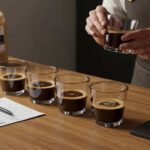
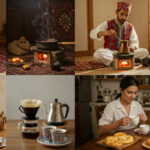










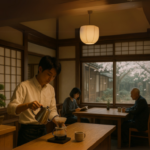




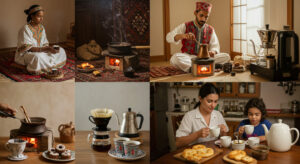



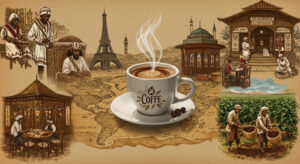




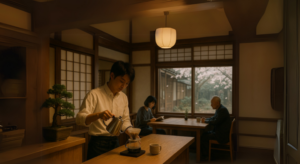
Post Comment